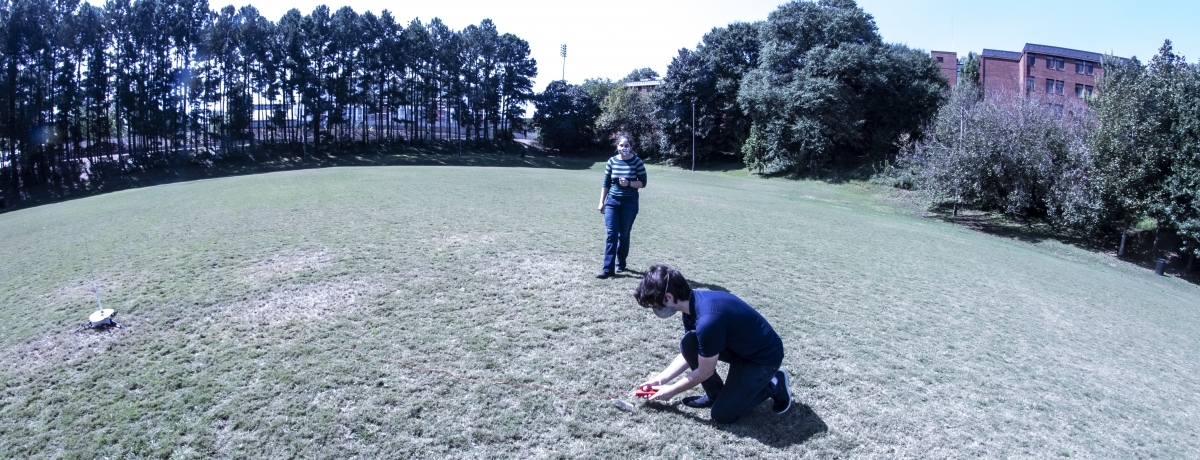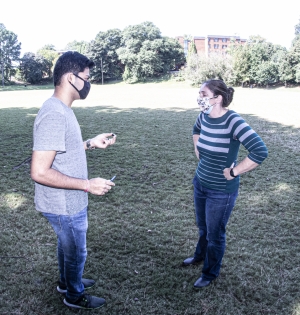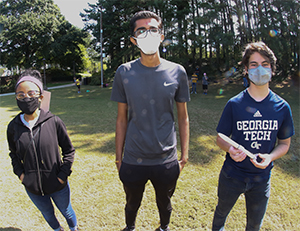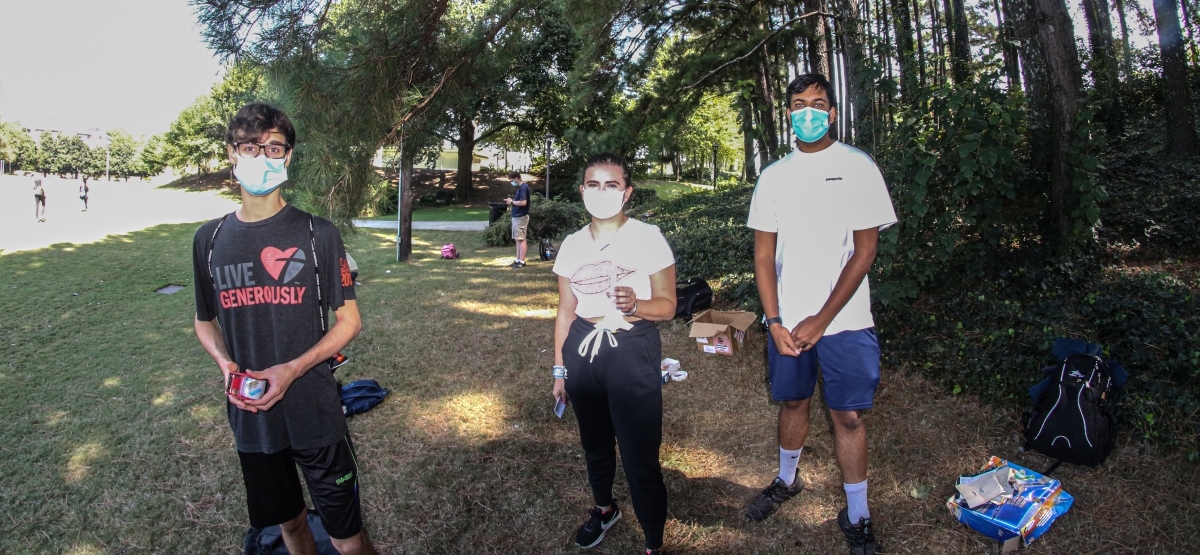 Ready. Set. Launch. Prof. Kelly Griendling, background, watches as one of her students preps his rocket for launch. Griendling and Prof. John Dec taught AE1601, helped 150 first- and second-year AE majors launch what was probably their first-ever rocket. We don't think it will be their last.
Ready. Set. Launch. Prof. Kelly Griendling, background, watches as one of her students preps his rocket for launch. Griendling and Prof. John Dec taught AE1601, helped 150 first- and second-year AE majors launch what was probably their first-ever rocket. We don't think it will be their last.
"It was a challenge, but we learned a lot."
That was the assessment Prof. Kelly Griendling gave the first week of October as she shepherded more than 50 student design teams to Burger Bowl Field for the annual AE1601 Fly-off. The practicum has become something of a rite of passage for first- and second-year AE majors, who must demonstrate their design prowess by launching a working rocket that meets certain specifications.
 |
| Consulting Before Launching. Griendling, right, talks with one of her graduate assistants about altimeter issues prior to launching a rocket. |
This year, the teams staggered their launches over a two-day period to avoid crowding. The rockets - modified from a Estes Viking rocket kit -- had to carry a small payload and an altimeter to 125 feet (and no further).
Some got close. Others exceeded it. But flying wasn't the biggest challenge.
"This is a class is usually a hands-on course, where students learn how to create, evaluate, and modify their design in a team," said Griendling.
"Usually, they are crowded around a 3D-printer in the [Yang] Aero Maker Space, arguing about how to improve the tailfin. And I'm walking around helping them, without getting in their way."
With new COVID-19 protocols around social distancing, physical contact, crowds, and hygiene, the 150+ students enrolled in this gateway requirement learned how to do what really matters via BlueJeans, phone calls, and emails.
 |
| The design. This schematic (courtesy of Carson Garner) was one of many that student teams submitted as a part of AE1601. |
"Most of the teams had some socially-distanced, in-person meetings, but about 15 percent of the students did everything remotely," Griendling explained. "That was tough, but I told them that that happens all the time in the real world, where you have half of your team on the other side of the country and you've got to use the technology you have to make it all work."
Previous years, students enrolled in 1601 were able to choose from a variety of commercially available rocket kits as the basis of their project. To simplify things this year, Griendling ordered the same Estes Viking rocket kits and 1/2A-3T engines for everyone. From there, their individual design modifications had to include the addition of a payload bay and a resized engine mount, which students achieved through a multitude of different designs.
 |
| Designing from a Distance. One of the student design teams prior to their launch. |
"There were definitely times where I know it would have worked out a little smoother if we could have met in person," said second-year Roberto Martelli. "But we found ways to work around the challenge, and I think we did a good job."
Griendling would agree with that assessment.
"In the past, they made a lot of improvements in their rockets while they were working together in the Maker Space. They would stage informal design reviews, " Griendling said.
"This time, they compensated by making a lot of changes to their rockets on the day of the flight, when most the team members came to the field. I think next time we do this class as a hybrid, I'll schedule a design review session before the launch day."
After months of parsing their time between library cubicles and laptop screens, students seemed relieved to be hanging out -- separate but together --- in the open air.
At least that's the way it seemed.
"Behind my mask, you can't tell if I'm crying or laughing," teased second-year Todd Gochmann.
"But I'm smiling. It's cool."

Ready to Launch. One of the 50 student design teams just prior to their launch.